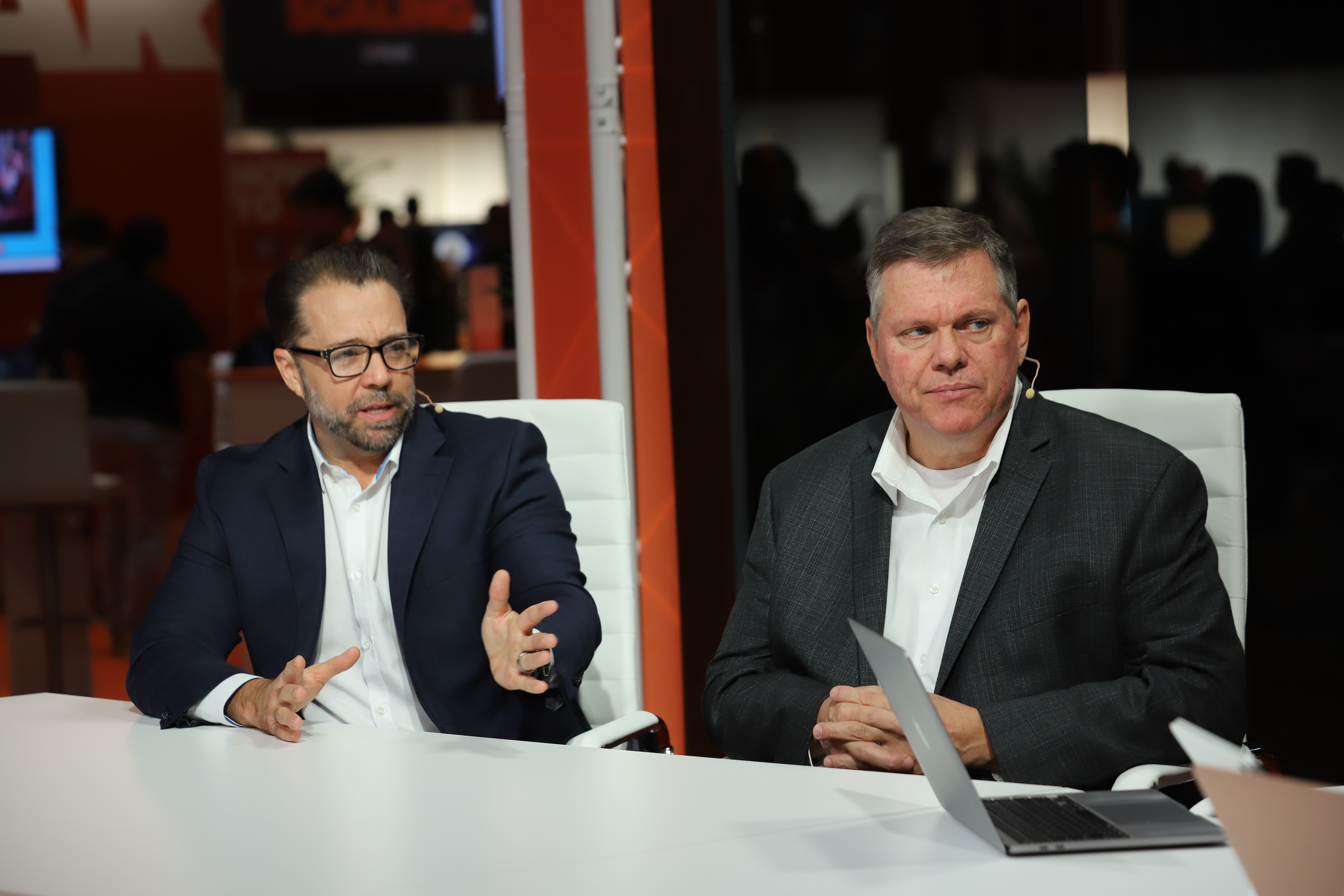 AI
AI
 AI
AI
 AI
AI
Health insurance is notoriously complex, burdened by paperwork, claims backlogs and rising costs.

Blue Cross’ Dan Deschamps and Gary Grena discuss automation for health insurance with theCUBE.
The healthcare industry has long lagged behind others, such as banking, when it comes to adopting data standards and streamlining processes. But at Blue Cross Blue Shield of North Carolina, leaders see automation as a key driver for modernization, standardization and cross-industry best practices.
“All across our enterprise, we work with executive process owners to direct all the power of all these really powerful automation tools to make sure that we’re supporting our executives in their cost reduction and efficiency goals,” said Gary Grena (pictured, right), intelligent document processing and automation, at Blue Cross Blue Shield of North Carolina
“Our IT partners work really hard, and we want to make sure that we’re making an impact on all the work, because automation that could save $700 or $700,000 usually takes about the same amount of work, and that’s what our automation consultants do.”
Grena and Dan Deschamps (left), vice president of experience platforms at Blue Cross Blue Shield of Arizona, spoke with theCUBE’s Dave Vellante and Rebecca Knight at UiPath Fusion, during an exclusive broadcast on theCUBE, SiliconANGLE Media’s livestreaming studio. They discussed how Blue Cross combines automation, AI and human oversight to cut costs and deliver faster, more empathetic experiences. (* Disclosure below.)
From small savings to multimillion-dollar improvements, Blue Cross treats automation as a critical lever in supporting affordability for members. Given that 80–85% of payer costs are tied to medical expenses, automation in claims processing has a significant impact, according to Grena. By accelerating reviews of high-dollar claims, Blue Cross can both reduce costs and ease the burden for members navigating difficult medical circumstances.
“Our goal at Blue Cross NC is to improve the health and well-being of all our members, of all North Carolinians,” Grena said. “What I love about the work that I do is any improvement we make, any efficiencies, well, that goes directly to reducing the cost that our members have to pay for health insurance.”
Blue Cross’ system spans a four-step process, from enrolling members in a plan to helping them find providers, processing claims submitted by doctors and sending correspondence to members, providers and employers. With 36 million claims annually, even a 1% error rate creates massive manual workloads. Automation steps in to reduce fallout and streamline corrections, turning what used to be bottlenecks into straight-through processing, according to Deschamps.
“If you’re a member, or a doctor, or a provider, a hospital … if you’re an employer who is taking care of insurance for your employees, or even a broker who’s selling plans, my job is to integrate with those guys, bring them in a digital experience,” he said. “As part of that, I have other engineering functions, which include the UiPath and automation capabilities that UiPath brings in.”
Crucially, automation in healthcare isn’t about replacing humans with robots. Instead, it’s about combining deterministic robotic process automation with generative AI and keeping a human in the loop for critical decisions, according to Greena.
“We have a policy that with every decision, there will not be a gen AI decision without a human checking over it,” he said. “Instead of just having one element, the deterministic robot, now you’re not replacing that. You’re adding the power of gen AI with the human in the loop. Those three things together are going to allow us to do end-to-end process automation.”
Here’s the complete video interview, part of SiliconANGLE’s and theCUBE’s coverage of UiPath Fusion:
(* Disclosure: TheCUBE is a paid media partner for UiPath Fusion. Neither UiPath Inc., the sponsor of theCUBE’s event coverage, nor other sponsors have editorial control over content on theCUBE or SiliconANGLE.)
Support our mission to keep content open and free by engaging with theCUBE community. Join theCUBE’s Alumni Trust Network, where technology leaders connect, share intelligence and create opportunities.
Founded by tech visionaries John Furrier and Dave Vellante, SiliconANGLE Media has built a dynamic ecosystem of industry-leading digital media brands that reach 15+ million elite tech professionals. Our new proprietary theCUBE AI Video Cloud is breaking ground in audience interaction, leveraging theCUBEai.com neural network to help technology companies make data-driven decisions and stay at the forefront of industry conversations.